Moto X Review
by Brian Klug on August 26, 2013 1:30 PM EST- Posted in
- Smartphones
- Qualcomm
- MSM8960
- Motorola
- Android
- Mobile
- Android 4.2
- Moto X
Display
Moto X is intriguing since it includes a relatively large 4.7-inch display in a form factor that isn’t nearly as big as other devices including similarly sized displays. Motorola has always been one to try new display technologies (I still remember when it tried an RG,BW LCD display), and in the Moto X moves to a Super AMOLED panel with the same subpixel unit cell as the Note 2. That’s pretty standard for Motorola, as Samsung will sell panels made on its n–1 AMOLED process to OEMs, and that’s exactly what we get here in the Moto X.
The Note 2 and Moto X display have a subpixel unit cell which includes a stacked red and green pixel, and adjacent blue pixel. The unit cell includes a full three subpixels per pixel (RGB), avoiding the loss of spatial resolution and color artifacts that arise from the other two subpixel per pixel unit cells we’ve seen in the past (RG,BG). As I wrote in the Note 2 review display section, I heard that this particular subpixel arrangement was called S-Stripe and was going to be branded, but it never was given an official name. Either way, the point of these alternative subpixel arrangements was always to offset the difference in luminous efficiency of the three subpixel types, and the resulting nonuniform geometry required to get the same luminance from each subpixel type. It does the job well and gives a full three subpixels per pixel. Samsung has also shrunk the size of subpixel unit cell down in order for Motorola to get 720p out of a 4.7-inch display.
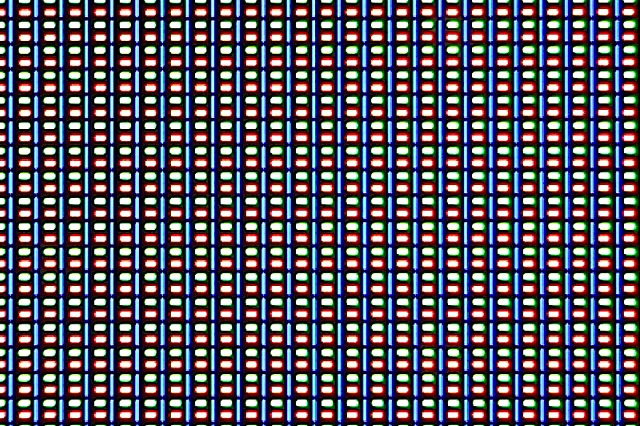
We’ve seen displays that are 1080p become the new bar for flagships in 2013, so the Moto X’s 720p display might initially sound like a minus. Including three subpixels per pixel however helps the Moto X out, enough for it to come in at 0.917 arcminutes per full pixel at 12 inches viewing distance, which is sufficient enough to beat normal human visual acuity of 1 arcminute. It’s a PPI of 312, which isn’t as crazy as the 450+ displays that are out now, but no slouch by any means. I can detect a difference between the Moto X and the really high DPI displays like the HTC One and SGS4, but it isn’t something that bothers me when using the Moto X.
| CalMAN Display Comparison | |||||||||||||
| Metric | iPhone 5 | iPhone 4S | HTC One X | SGS3 | Samsung Galaxy Note 2 | Google Nexus 4 | HTC Droid DNA | HTC One | SGS4 | Moto X | |||
| Grayscale 200nits Avg dE2000 | 3.564 | 6.162 | 6.609 | 4.578 | 5.867 | 7.686 | 6.738 | 5.391 | 7.511 | 3.782 | |||
| CCT Avg (K) | 6925 | 7171 | 5944 | 6809 | 7109 | 8506 | 8108 | 8118 | 7020 | 6873 | |||
| Saturation Sweep Avg dE2000 | 3.591 | 8.787 | 5.066 | 5.460 | 7.986 | 8.517 | 5.856 | 3.365 | 7.823 | 6.268 | |||
| GMB ColorChecker Avg dE2000 | 4.747 | 6.328 | 6.963 | 7.322 | 8.185 | 7.531 | 6.687 | 4.656 | 7.440 | 5.771 | |||
Motorola doesn’t seem to mess around too much with dynamic everything features for display that I really don’t like, nor does it have a crazy auto brightness curve. I still will personally take an LCD display over AMOLED, but the characteristics of this panel are relatively well behaved. Only if you force brightness to absolute zero does there start being visible purple color shift, something which long has been an issue for AMOLED panels. The days of mura (luminance irregularities which looked like grain) and splotches however are gone, there’s none of that in the Moto X display.
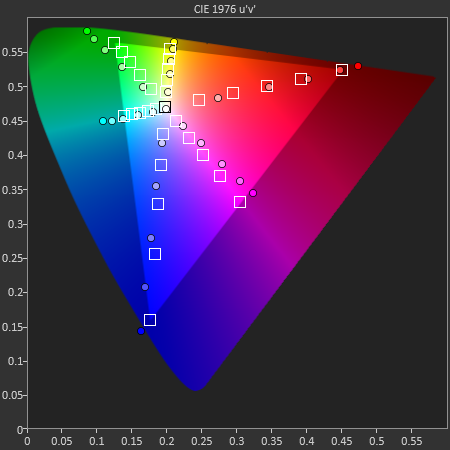
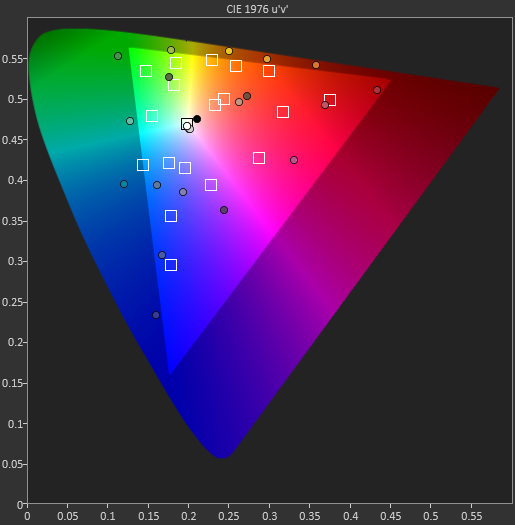
I measured the Moto X in our display suite and unfortunately the other axis of AMOLED, oversaturation, still continues here. The Moto X display is wildly oversaturated, with saturations that blow past the sRGB values we expect or want. On the upside, the color temperature is controlled and not the usual blue that we see with AMOLED, at an average of 6800K across the greyscale it’s not bad at all by comparison, though it does get slightly above 7000K at 100 percent white. Subjectively however it isn’t the annoying level of blue that I am used to seeing. Also the greyscale delta-E surprised me from the Moto X, it’s not very high at all.
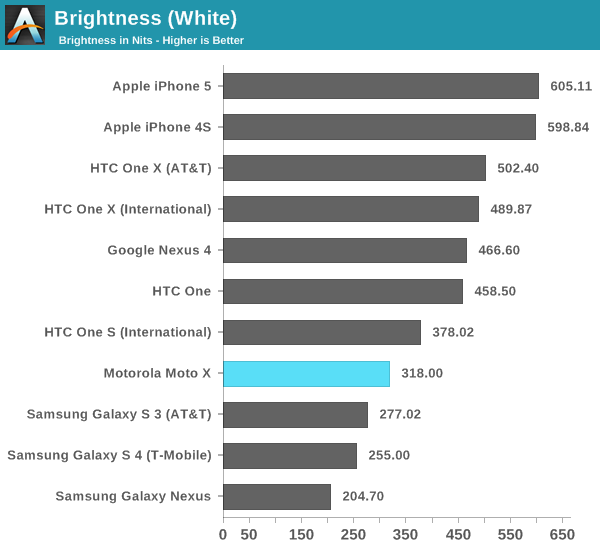
The Moto X display is an interesting one which leaves me feeling mixed. It uses a new, smaller pixel pitch version of the subpixel arrangement we saw with the Note 2, and it’s better behaved than the Samsung calibration of that panel. At the same time the color space issues persist along with power draw, but Motorola deserves kudos for not having annoying dynamic brightness functions. I personally still will take a high DPI, well tuned LCD display over AMOLED, and like the 1080p LCDs we’ve seen from JDI and Sharp in recent devices, but I understand that Motorola had to go AMOLED here for the active display feature to not absolutely destroy battery life. The matter of resolution also still is there, but 720p at this size with a solid 3 subpixels per pixel isn’t a deal breaker.
Sound
Lately I've been getting more and more jaded about line out quality on devices. There's something about close proximity to a transmitter and the confined spaces in a smartphone that makes getting good clean audio a challenge for everyone. That said I was impressed by the sound quality on the Moto X both on line out, on calls, and on the speakerphone. I'm doing subjective reviews of audio line out quality until we get a new testing methodology from our Display (and Audio guru) Chris Heinonen, after he gets access to a new test bench. I listened to a lot of music while traveling on the Moto X using my Shure SE535 IEMs and came away pretty impressed. I've heard a lot of smartphones that either lacked a lot in the mids, had discernable noise, or various issues driving IEMs at low volume, but I didn't encounter anything negative on the Moto X.
On phone calls, I was actually shocked by how good the Moto X sounded. I had no problems hearing people on the other end, and found myself wanting the Moto X when I wasn't using it. The rounded top and sides also make the Moto X very comfortable to hold to the face. I am still surprised by the fact that I'm drawn to the Moto X because of how much different in a positive way it sounds from some of the other handsets I've played with recently, especially when on conference calls. I heard positive feedback from the terminating side of the call as well, that I sounded good on both speakerphone and handset mode.
Oddly enough though the Moto X didn't do too well in my ambient nose rejection test which consists of a babble distractor track played at volume that ramps up and then back down. There's still a lot of background noise that leaks through in that test, although when I called from a few loud locales and asked for feedback I always heard that noise level was acceptable.
The Moto X undoubtely uses a beamformer created by the front microphone and back microphone, used in a pair, with the top microphone reserved for speakerphone mode and stereo audio when recording videos.
The speakerphone goes very loud as well, without distorting. The Moto X includes an NXP TFA9890 speakerphone driver with boost and active protection. We've seen this and similar solutions get used a lot to good effect this generation, and the Moto X reflects that loudness in our speakerphone test. I was frankly shocked how loud the thing goes. The downside is that it's still mono (so the HTC One is still a better choice for music) and seems to have different behavior for music, but on calls the speakerphone goes very loud without distorting.


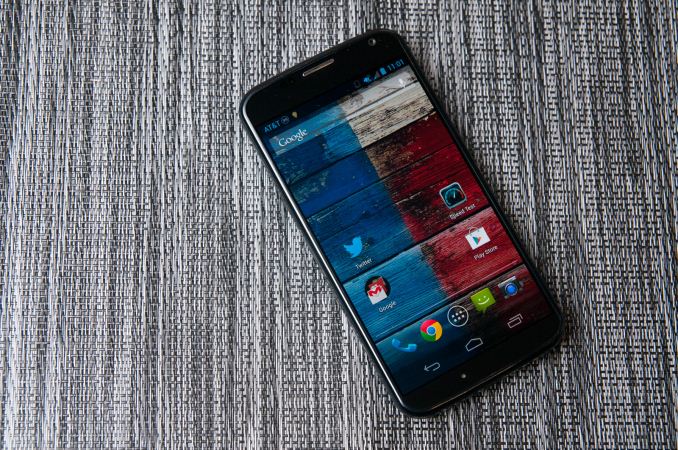
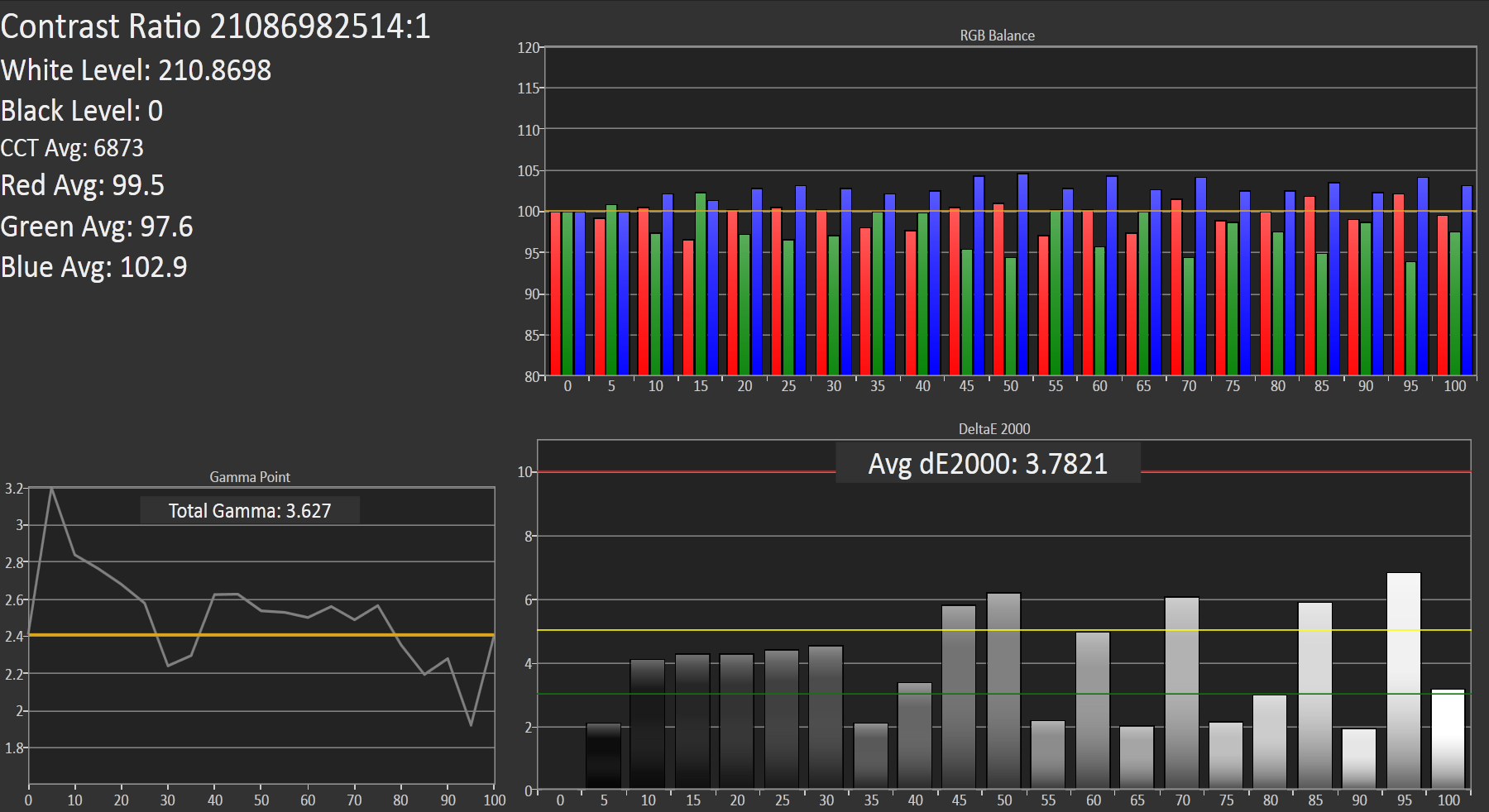

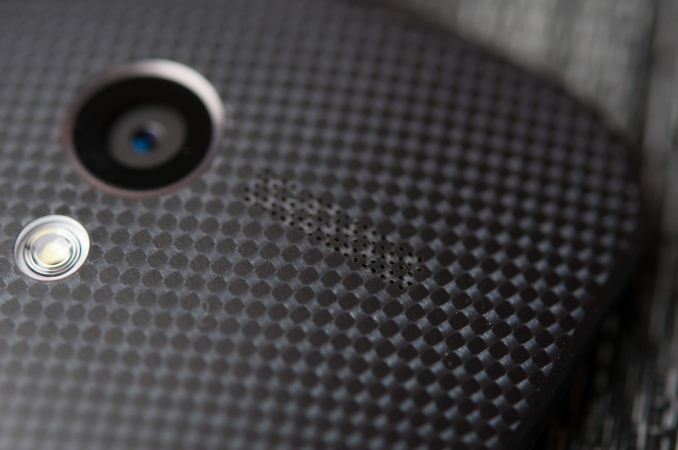
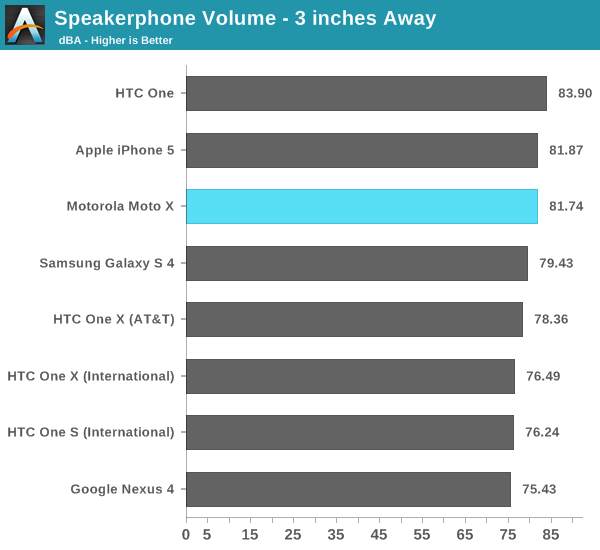








105 Comments
View All Comments
PC Perv - Monday, August 26, 2013 - link
Same for the screen. It's not as if everyone is in publishing industry. Human eyes are not limited to sRGB. Colors can be accurate or inaccurate, but there is no right or wrong ones. The author talks as if having larger gamut than sRGB in and of itself is always a negative. Ever looked into the ocean and be marveled at the nature's wonder?Friendly0Fire - Monday, August 26, 2013 - link
It is a negative if the software is not aware that the gamut is larger (hint: it isn't), causing incorrect colors.I doubt anyone at AnandTech would spit on an AdobeRGB screen if the OS and all software handled it properly, but that's just not happened and probably won't for the foreseeable future. In the meantime, accurate colors are better than higher gamut.
MartinT - Tuesday, August 27, 2013 - link
I'd argue that a large portion of what remains as a debate on optimal screen size is down to one particular supplier with considerable market share in the US not providing a model anywhere even close to what Brian (and the market) have zeroed in on as optimal.This is where Samsung's policy of trying absolutely everything comes real handy to anyone interested in cellphone trends.
quickbunnie - Monday, August 26, 2013 - link
Brian Klug didn't think he'd like the Moto X. After using it, Brian Klug liked the Moto X.Translation: This phone is frickin awesome!
Brian Klug - Monday, August 26, 2013 - link
I like it a whole lot more than I thought I would, still using it! :)-Brian
Fiebre - Monday, August 26, 2013 - link
I wish you guys could do a battery test on the Droid maxx. I would really appreciate it.icrf - Tuesday, August 27, 2013 - link
I second this point. I'm thus far assuming that, industrial design aside, all Moto X points apply to Droid Maxx, except battery life. The Verge posted their review and said the new Droid Maxx falls short of last year's Droid Razr Maxx despite having an inflated battery life number in the marketing. That said, everyone else's battery tests seem to do silly things like not calibrating the display to a standard, which means the tests are neigh useless. We need Anandtech's superior consistency.Honest Accounting - Sunday, September 15, 2013 - link
The battery test here isn't as "objective" as the reviewer claims. It uses a fixed "200 nits" screen brightness, which will favour current LCD technology (and Apple in particular) over OLED . To be credible the screen brightness on the battery test should be a percentage of maximum screen brightness.geniekid - Wednesday, August 28, 2013 - link
But would you prefer using the Moto X or the HTC One?Solandri - Monday, August 26, 2013 - link
I was a bit confused by the flash read/write performance charts. The standard in reviews seems to be to order them sequential r/w, then random r/w. I did a double take, then realized you'd ordered them write random/sequential, then read random/sequential. Different, but no big deal.Then I did a triple take and realized you'd ordered them write random/sequential, then read sequential/random. Coincidentally, this ordering is best-to-worst for the Moto X.
I trust your site's reviews enough to believe this was purely a coincidence, and that you switched the ordering because you led off by talking about the F2FS filesystem's write speed improvement (with the read speeds maintaining the traditional sequential/random order). But if you're going to switch around the order for the write speeds, you should switch the order of the read speeds to be consistent. The current ordering is not logical, and it gives the appearance of bias in favor of the Moto X.